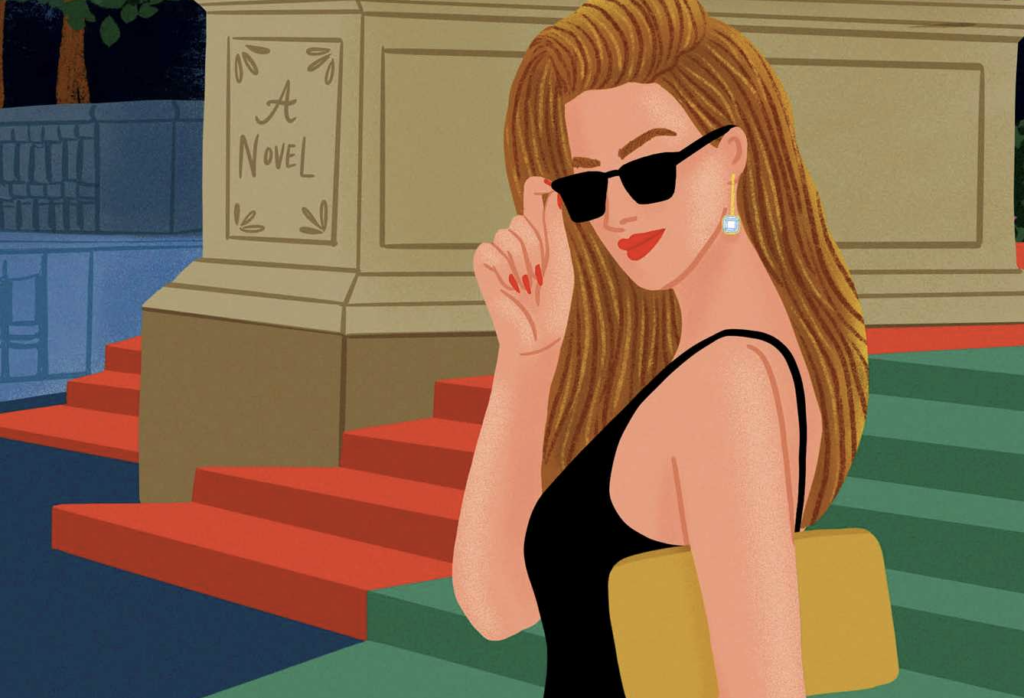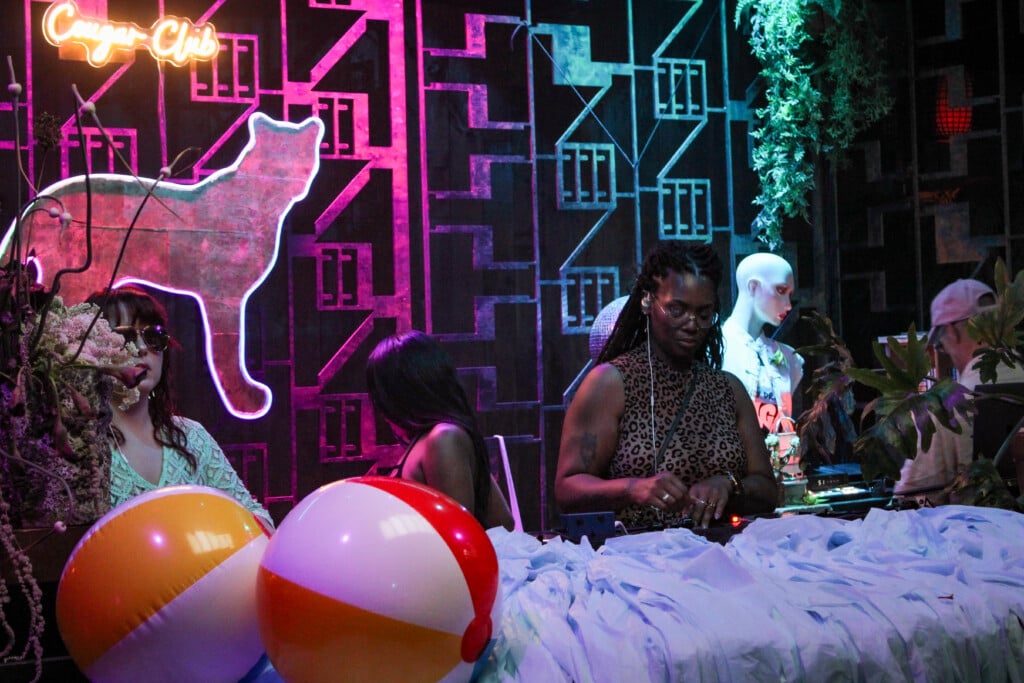Author/illustrator Celia Krampien’s debut novel The Bellwoods Game conjures Halloween in July
Out this week from Simon & Schuster Children’s Publishing, writer/illustrator Celia Krampien’s debut novel, The Bellwoods Game, is “more than just a Halloween story, and at its core, it’s about friendship with a crew reminiscent of the Mystery Inc. folks from Scooby-Doo.” It’s a young adult novel liberally peppered with Krampien’s own illustrations, making for a rich and fun reading experience, be you young or old.
“Everyone knows Fall Hollow is haunted. It has been ever since Abigail Snook went into the woods many years ago, never to be seen again. Since then, it’s tradition for the sixth graders at Beckett Elementary to play the Bellwoods Game on Halloween night. Three kids are chosen to go into the woods. Whoever rings the bell there wins the game and saves the town for another year, but if Abigail’s ghost captures the players first, the spirit is let loose to wreak havoc on Fall Hollow—or so the story goes. Now that it’s Bailee’s year to play, she can finally find out what really happens. And legend has it the game’s winner gets a wish. Maybe, just maybe, if Bailee wins, she can go back to the way things used to be before her grandma got sick and everyone at school started hating her. But when the night begins, everything the kids thought they knew about the game—and each other—is challenged. One thing’s for sure: something sinister is at play…waiting for them all in the woods.”
The book’s Halloween setting is perfect for beating the summer heat, and we reached out to Celia Krampien via email to talk all about The Bellwoods Game and how it came about.
The Pitch: Where did the inspiration for The Bellwoods Game come from?
Celia Krampien: The first inkling came many, many years ago while I was driving past a scenic area near where I lived at the time. It had a bridge and a high cliff with a river down below. My wandering brain thought, “What if there was a person standing up on the cliff?” When I asked that question, a bit of the rhyme from the beginning of the book, along with Abigail Snook’s name, popped into my head. I thought, “Who is this imaginary person?” I went home and did some googling, and she didn’t seem to exist yet, so I went about making a story for her. It took some time, but I’m glad it finally happened.
What scenes did you know for which you had to have illustrations?
While writing, I tried to add scenes and things I’d be excited to illustrate. Unfortunately, I also added things that were outside of my comfort zone (which I remembered much too late in the process that I would also have to illustrate and then kicked myself for). I have fun drawing things like trees and animals, but I struggle a lot more with human figures and generally avoid crowd scenes at all costs. I did end up with one crowd scene in this book, despite my best attempts to wriggle out of doing it. Some moments just felt necessary to illustrate in order to capture the tone of the scene.
Were your illustrations a way to offer up details that a written description might have made awkward or hamfisted?
Ha, absolutely. There are a few scenes that are expositional, full of back-story stuff, and I chose to do those in a paneled, comic book sort of style. The scenes felt more immediate, more action-oriented that way. Working with both illustrations and words gave me a lot of freedom to switch between storytelling “tools.” I liked experimenting with how both forms could share the storytelling workload.
How did you choose to include a non-binary character (masterful inclusion, by the way)?
My main thought was about reflecting middle schools accurately. To me, it wouldn’t feel accurate or honest to write about present-day middle graders without including kids with varied gender identities. With the rise of book bans targeting the LGBTQIA2S+ communities, as well as BIPOC stories and history, Arlo’s character and role within the book—being physically unable to speak their story and the truth of the game—has probably, and very sadly, become much more relevant than I intended or hoped.
Family and friendships and how they change play a big role in The Bellwoods Game. How do you balance drama without it becoming “drama”?
I’m generally a “drama” avoidant person, so even though I personally find it painful to inflict conflict, it’s needed to drive the story forward. Each kid has a backstory and something unique they’re struggling with at school or home that relates to a central theme of being misunderstood. I wanted each kid who came out of the woods at the end to have changed in some necessary way. The kids in this book make mistakes, and I wanted to show how that’s ok.
This is your first novel. What challenges did this present as a writer?
Every aspect has been a huge learning experience. I enjoy learning new things and challenging myself, but the process could be daunting at times too. I had a wonderful team working with me. I’m especially grateful to my agent, Andrea Morrison, editors Alex Borbolla, Kristie Choi, and Reka Simonsen, as well as art director and designer Lauren Rille, who all worked very closely with me, expertly guiding me through the process. I had total faith in the whole team, but it was challenging to trust myself while making this novel. I felt a lot of self-inflicted pressure to do right by the story and this amazing team who’d taken a big chance on me because this is something I’ve never done before.
The Bellwoods Game is a self-contained, thoroughly entertaining book, but it ends with the possibility of further adventures for Bailee and her friends. Do you have any planned?
I did want to leave the story open-ended because I think that gives some freedom to the reader to wonder about what could happen next. Also, with The Bellwoods Game being this ongoing event within the story, it was an ending that felt right. There’s no plan to revisit Fall Hollow right now but if the opportunity arises in the future, I wouldn’t rule it out.
Writer/illustrator Celia Krampien’s debut novel, The Bellwoods Game, is out this week from Simon & Schuster Children’s Publishing.







